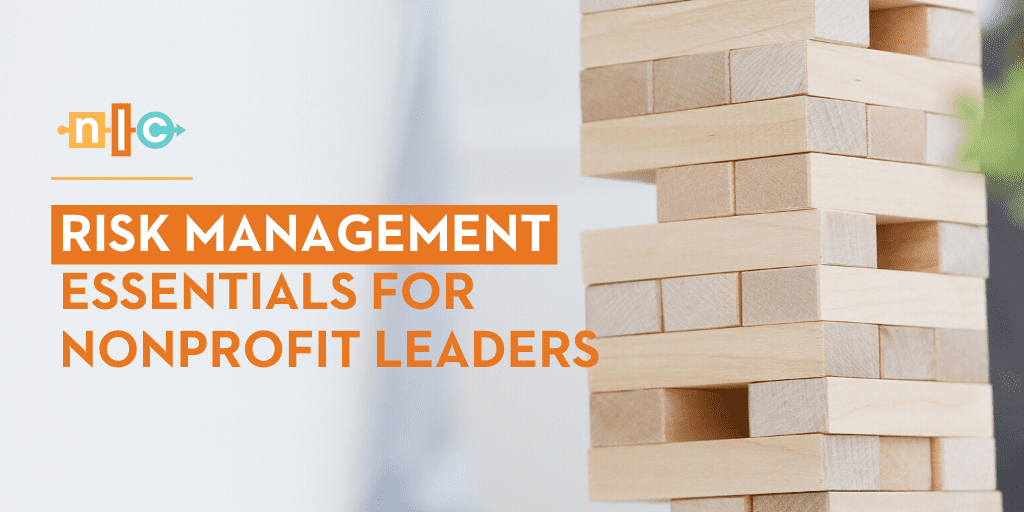For most nonprofit organizations, the cost of property and casualty insurance is among the top five expense items within already limited budgets. As the need for nonprofit services increases, resources shrink and the insurance marketplace becomes firmer, nonprofit leaders must take steps to reduce and control their organization’s risks and lower costs in the process.
Before we dive into risk management trends and strategies, it’s important to understand what we mean when we talk about risk management. For this communication’s purpose, we are talking about commercial insurance or property/casualty coverage. These lines of coverage include property (buildings and contents), general liability, auto, workers’ compensation, management liability (directors, officers and employment practices liability), professional, cyber insurance, and the list goes on.
The insurance marketplace has recently experienced a hardening, meaning less capacity and higher pricing. COVID-19 has made the insurance marketplace even more unstable, especially for the already precarious nonprofit segment. Here are three trends nonprofit leaders should anticipate as we continue in the current environment.
Risk Management Trends
1. Insurance costs will increase.
When developing budgets for the coming year, nonprofit leaders should expect and plan for their insurance premiums to increase. This is especially true for automobile coverage (particularly if your organization provides transportation services) and for those involved with supporting children, as the market for sexual abuse and molestation coverage has become extremely challenging. Many nonprofits are struggling to obtain the same limits they’ve had in the past, and many carriers are simply not offering coverage in that segment any longer.
Since they follow the underlying policies and jury verdicts are on the rise, the excess/umbrella marketplace has hardened considerably. Likewise, we are seeing less capacity in the property market, especially for coastal locations. While your area may not have experienced a catastrophic loss, there have been many others worldwide that impact the entire marketplace. Lastly, the directors and officers line of coverage is also seeing firming for the first time in years.
2. Employment practices and workers’ comp claims may increase.
With many nonprofits and for-profit companies having had to lay-off or furlough employees in response to COVID-19’s impact, we expect employee claims around supervisor mistreatment and discrimination to increase. The renewed commitment to racial justice in America may also impact claims in this area.
Given the inherent nature of this industry segment, most nonprofits have not only continued working, but the need for their services has increased. Employees who become ill and allege their illness was work-related will increase workers’ compensation claims. Compensability will be in question. Only time will tell how this area is ultimately impacted.
3. Ignorance may be your worst enemy.
In working in nonprofit risk management for nearly 15 years, one of the most common issues I see is that leaders aren’t fully aware of their claims experience. Claims may be settled without the organization’s knowledge or input, and adjusters may settle or reopen claims from several years ago due to new activity. When it comes time for policy renewal, insurance companies can significantly increase rates because of claims that the organization doesn’t realize are an issue. You cannot shed your claims history. Nonprofit leaders must be vigilant about what is going on and understand what underwriters are looking at to determine their organization’s premiums.
Strategies to Reduce Nonprofit Risk
What can nonprofit leaders and organizations do to reduce their risk? Here are a few important places to start.
1. Do more than the minimum.
Implement and invest in risk-reducing practices that go beyond the bare minimum. For instance, nonprofits that provide services to children can and should do more than the legally required background checks. There are additional trainings and programs that can be put into place. For nonprofits that provide transportation services, adding policies that require regular vehicle inspections, training and address common risks in every staff meeting offer an extra layer of risk mitigation and raise awareness. The key is to ensure that safety policies and trainings aren’t simply tools that sit on a shelf and collect dust. Nonprofit leaders have a critical responsibility to integrate risk mitigation strategies and culture into everyday practice and conversations.
2. Cultivate the right culture.
The stronger your organizational culture is, the more successful your nonprofit will be, including when it comes to risk management. This starts at the top with the executive staff team and board of directors being engaged in risk management and authentically invested in why it’s important. Nonprofit CEOs should take the time to participate in safety meetings and understand loss trends to focus training.
When it comes to board leadership, seek a diverse group of professionals who represent both those you serve and those with the expertise to provide oversight and guidance. Most importantly, seek leaders who embrace a culture of curiosity and aren’t afraid to share their opinions or ask questions to avoid unintended risk.
3. Tell your story.
When nonprofits are seeking insurance coverage, it’s critical to help partners and insurers understand your mission and the steps you’re taking to mitigate risk. In addition to communicating how your organization is making an impact in the community, be sure to highlight the policies, procedures and training you have in place and how it is more than “check-the-box” online tutorials or posters hanging in a break room. What are your hiring practices? How are you onboarding? How are you training? Are there repercussions after an accident/incident? Tell the story about your commitment to risk management to insurers and partners. Applications are part of the process, and while they are not fun to complete, taking the time to be detailed will help.
4. Look for a partner who puts your mission first.
Selecting an agency to partner with your nonprofit is a significant decision. When evaluating risk management partners, start by looking for a company that puts your purpose before its profits. Ask other nonprofits about their experiences. Consider an RFP (Request for Proposal) process for agent/broker selection so you can meet the team you would be working with and determine if there is a cultural fit. The services provided and the level of expertise vary greatly by agency.
Here are a few questions you should ask a current or potential risk management partner:
- How do you help our organization improve our risk profile?
- What other nonprofits do you work with and may I contact them?
- What is your standing in the marketplace for nonprofits?
- Are the carriers you represent all AM Best rated and protected by FIGA?
- Are there other options outside the traditional insurance marketplace?


